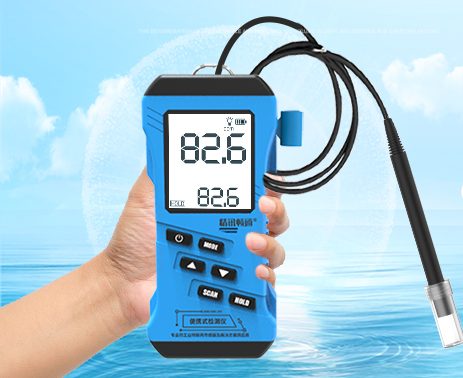Water is essential for life. It sustains ecosystems, supports human health, and is a vital resource for industry and agriculture. However, water quality can be compromised by a variety of factors, including pollution, natural disasters, and climate change. This is where water quality detectors come in, playing a crucial role in safeguarding this precious resource.

Understanding Water Quality Parameters
Before diving into water quality detectors, it’s important to understand the key parameters these devices measure. These parameters provide a comprehensive picture of the water’s health and potential risks:
Physical Parameters:
Temperature: Water temperature impacts the amount of dissolved oxygen (DO) and the life forms that can survive in the water.
Turbidity: This measures the cloudiness of the water, often caused by suspended particles like sediment, algae, or microorganisms.
Conductivity: Indicates the ability of water to conduct electricity, reflecting the presence of dissolved salts and minerals.
Chemical Parameters:
pH: Measures the acidity or alkalinity of water. A healthy pH level is crucial for aquatic life and various water treatment processes.
Dissolved Oxygen (DO): Essential for aquatic life, DO levels can be depleted by organic matter decomposition or pollution.
Chlorine: Used as a disinfectant in drinking water, monitoring chlorine levels ensures proper treatment without exceeding safe limits.
Nutrients: Excess nutrients like nitrates and phosphates can lead to algal blooms, impacting water quality and aquatic ecosystems.
Heavy Metals: These can be toxic to humans and aquatic life, even at low concentrations.
Biological Parameters:
Bacteria: Monitoring bacterial levels is crucial, particularly in drinking water, to identify potential contamination and health risks.
Types of Water Quality Detectors
Water quality detectors encompass a diverse range of technologies, each suited for specific needs and parameters:
Electrochemical Sensors:
These measure parameters like pH, conductivity, and DO based on the electrical properties of water and electrodes. They are widely used for their accuracy, portability, and affordability.
Optical Sensors:
Utilizing light to measure properties like turbidity and chlorophyll (an indicator of algal growth), these sensors offer fast and non-invasive monitoring.
Biosensors:
Emerging technology, biosensors employ biological components like enzymes or antibodies to detect specific contaminants or pollutants.
Multiparameter probes:
These combine multiple sensors into a single unit, allowing for simultaneous measurement of various parameters.

Benefits of Using Water Quality Detectors
The advantages of employing water quality detectors are numerous:
Early Detection of Contamination: Prompt identification of pollutants or changes in water quality allows for timely intervention to prevent harm to human health or the environment.
Improved Water Treatment Processes: Real-time data from detectors helps optimize treatment processes by adjusting chemical dosing or filtration based on specific water conditions.
Environmental Monitoring: Detectors play a vital role in monitoring rivers, lakes, and coastal waters, aiding in pollution prevention and ecosystem protection.
Data-Driven Decision Making: The data collected facilitates informed decisions regarding water management practices, resource allocation, and regulatory compliance.
Increased Public Awareness: Monitoring data can be shared with the public, fostering awareness and promoting responsible water usage practices.
Considerations When Choosing a Water Quality Detector
Selecting the appropriate water quality detector involves several factors:
Parameters of Interest: Identify the specific parameters you need to measure based on your application (e.g., drinking water, aquaculture, environmental monitoring).
Accuracy and Precision: Consider the level of accuracy and precision required for your application. Higher accuracy often comes at a higher cost.
Portability and Ease of Use: Portability is crucial for field measurements, while user-friendliness ensures efficient data collection.
Calibration and Maintenance Needs: Regular calibration and maintenance are essential for reliable data. Choose a detector with user-friendly calibration procedures and readily available replacement parts.
Data Logging and Connectivity: If continuous monitoring or remote data access is needed, consider with data logging capabilities and wireless connectivity options.
Cost: Water quality detectors range in price, so determine your budget and prioritize features essential for your needs.